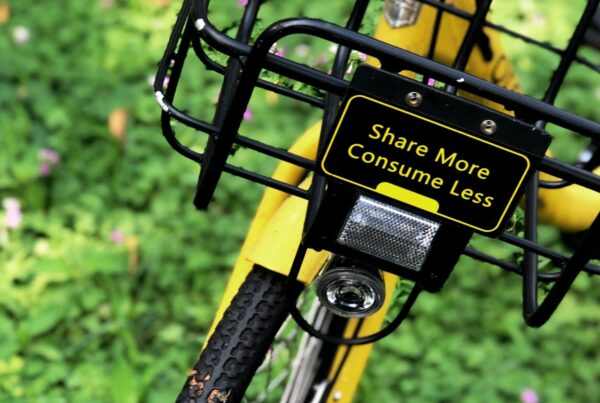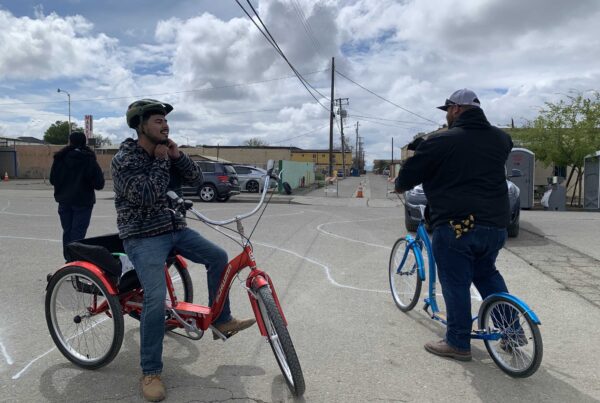Welcome to the Shared-Use Mobility Center’s weekly guide to the most impactful news, thought-provoking articles and innovative technologies that are shaping our transportation future. We believe in sharing information, just like sharing cars, bikes, and scooters, so if there’s anything additional you’d like to see, just drop us a line.
Announcements
Watch our Webinar about the Clean Mobility Options – Mobility Operator RFI.
The California Air Resources Board is in the process of launching the Clean Mobility Options program, which supports zero-emission carsharing, bikesharing, ridesharing, and other innovative mobility services in low-income and disadvantaged communities around the state. The Shared-Use Mobility Center and CALSTART are serving as Statewide Administrator of the program and issuing this Request For Information to create the program’s Mobility Provider Directory.
This webinar allows interested mobility operators to obtain information about program design and the development of a Mobility Provider Directory. RFI responses are due to the Statewide Administrator by Tuesday, September 17th, so take a look and help to create the next generation of shared+electric mobility partnerships.
MOD Learning Center Bikesharing Double-Feature!
See how bikesharing is evolving in one of America’s largest cities and in your small town with our evaluation profile of free-floating bikeshare in Seattle and a brand new case study on rural bikeshare in Pocahontas, Iowa.
Meet, Mingle, and Toast Mobility at SUMC’s NACTO Reception
—almost sold out!
Tues, Sept 10 | 6:00 pm – 8:00 pm | The Fifth Social Club, Toronto
Ridehailing/Carsharing/Carpooling
VIDEO: Learn about ridehailing’s beginnings, its impact on VMT and “empty-seat inefficiency”, the role of data, and driver wages—all in hand-drawn illustrations. Watch on YouTube.
New research on data collected from a sample of 14,756 fares by Jalopnikshows that Uber and Lyft’s take rate, the cut they receive from driver trips, is anywhere between 8.5-10% percent higher than the companies’ reported figures.
Zum, the ridehailing service for kids aimed at helping parents manage busy after-school schedules, has expanded into six major US metros including Chicago and DC.
Floridians that are evacuating to local shelters in areas affected by Hurricane Dorian can get two free rides up to $20 each way from Uber and Lyft.
Partnerships and Programs
Caltrans will be awarding over $34 million in 2020 to transportation planning projects focused on growing sustainable communities by reducing transportation-related emissions.
Lyft, the Philadelphia Housing Authority, and Uplift Solutions are partnering to help families living in “food deserts” access healthy grocery options with subsidized ridehailing trips around public housing communities.
The Santa Clara Valley Transportation Authority will use $125 million of allocated funds from the FTA to expand BART light rail as part of a six-mile, four-station extension.
The Ann Arbor Area Transportation Authority has replaced two underutilized bus routes with its on-demand FlexRide shuttle service after seeing steady growth in Ypsilanti Township since 2017.
Bikesharing and Micromobility
For seven years, George Washington University students advocated to use the discounted Capital Bikeshare memberships that are available to university faculty and staff. Thanks to the District DOT, now they’re open to all students at DC-based universities.
What can be done to make dockless scooters safer to ride on LA streets? Officials are attempting to enforce pricey violation tickets to users who ride on the sidewalk but this approach is neglecting a more useful solution: protected bike/scooter lanes.
AUDIO: Hear Recode chat with Lime president Joe Kraus about the company’s ride through the bursting scooter scene and how to see and seize opportunities to keep people on two wheels and out of cars.
Infrastructure around schools plays an important role in encouraging students to walk or bike to class—and this helps to decrease surrounding traffic, increase pedestrian safety, and promote healthy and active lifestyles.
Transit
After Kansas City decided to make their streetcar gratis, the city is now considering making the entire KCATA transit system free as well to make it easier for everyone to afford to ride the bus.
Congrats to Phoenix voters for voting no on Proposition 105 which aimed to block light rail development in the city’s South side.
Detroit transit riders now have an app, from the people over at fare software company Passport, that allows them to buy multi-use passes for fixed-route buses and the Q-line streetcar.
Transportation in cities has been planned and built specifically around men for years, leaving women to use streets that may feel dangerous or uncomfortable. Streetsblog looks at several places that have maintained the gender gap in mobility.
Technology
Take a trip and choose your shared mobility options with Google Maps’ new multimodal feature that combines ridehailing or cycling as first/last mile options for transit directions in multiple US cities.
To keep people out of bike lanes and bring justice to drivers blocking them, a San Francisco-based designer/engineer built the app Safe Lanes to give citizens the power to report offenders and help keep the streets safer for cyclists.
Didi, the ridehailing giant of the East, will be piloting an autonomous vehicle ridehailing service in Shanghai, which will include up to 30 different models of level 4 autonomy.
Pigeon, the crowdsourced app for New York transit updates, now includes more than just city rail, with buses, commuter rail, and ferries rounding out the shared mobility options.
Urban Sustainability
What would happen if every American driver cut about 1,350 miles per year (about 10%) from their road mileage? An effect similar to “taking about 28 coal-fired power plants offline for a year.”
Idea: instead of viewing scooters as an obtrusive nuisance, how about viewing them as one of several intermediate modes of travel (vehicles that go between 10-15 mph) that give people more mobility options and first/last-mile connections from transit. All they need is a little street space.
Many of the Democratic candidates for the 2020 US election have laid out trillion-dollar plans to combat the effects of climate change, with Bernie Sanders’ Green New Deal being the most comprehensive. One blind spot remains even with the inclusion of school bus electrification and modernizing transit: our destructive car dependence.
A new book from Gehl creative director David Sim looks at the aspects of interconnected, mixed-use “soft cities” that are planned around public interactions and social connections, making quality of life a focus when bringing together amenities for more “layered” and integrated spaces.
VIDEO: Check out Vox’s video on the sameness of the ‘burbs and how many era-altering factors from the mid century, such as the auto industry and federal financing, created the Stepford neighborhood that’s still prevalent today.
Requests for Proposals, Qualifications, or Information
RFQ: Citywide Pedestrian and Bicycle Master Plan
City of Mount Vernon
Mount Vernon, New York
Deadline: September 27, 2019
RFP: 2021 Transportation Alternatives Program
Kansas Department of Transportation
Kansas
Deadline: November 1, 2019
RFP: Uber Mobility Research Grants Fund
Uber
Deadline: December 1, 2019
Did someone forward this to you? You can sign up for our newsletter here.





